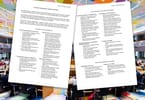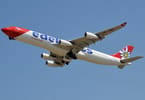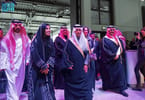Dusseldorf is often overlooked in favor of its more popular sister Cologne, but this elegant, modern city on the eastern bank of the Rhine River has risen steadily to defy its origins as the dorf (village) at the mouth of the river Dussel, a tributary of the Rhine.
The heart and capital of the North Rhine-Westphalia region as well as the German advertisement and fashion industry, Dusseldorf has risen to become an important international business and financial hub.
But it also has a contemporary arts and culture scene that has solidly placed the city on the map. Its art museums, world-class architecture and a thriving design scene continue to attract visitors from around the world.
WHAT TO SEE & DO
If Dusseldorf is the Hautstadt — a play of the German word haupstadt (capital) and the French haute — of Germany, the Konigsallee is its display window. The Ko, as the locals call it, is a kilometer-long luxury shopping boulevard. Its prime location in the heart of the city makes it a good place to start digging both into your wallet and the city.
Make your way to the Altstadt, or the Old Town, on the northern end of the Ko. Because of its roughly 260 bars and restaurants along a single street, it is known as “the longest bar in world.” Here the Altbier, Dusseldorf’s distinctive brew, is the beverage of choice for locals and tourists alike.
From here, take a scenic 20-minute walk along the Rheinuferpromenade, a pedestrian street along the Rhine, to MedienHafen. Here what was once an old commercial port with abandoned warehouses, facades and silos has been redeveloped into an ultra-modern harbor. Let yourself be baffled and impressed by Frank Gehry’s Neuer Zollhof, a set of three avant-garde buildings coexisting side by side with old industrial buildings reminiscent of the harbor’s past.
You’ll want to save time to visit the city’s many galleries and art museums. Dusseldorf, apart from being known for its many world-class exhibitions, is home to one of Germany’s most important collections of 20th century art, the North Rhine-Westphalia art collection.
This collection is housed at the K20 and the K21 art museums which are 1.5 kilometers apart. At K20, enjoy works by Andy Warhol, Henry Matisse and Pablo Picasso among others. Then hop on a free shuttle to the K21, K20’s slightly edgier sister which houses contemporary art from around 1970 onwards.
WHERE TO EAT
Despite the city’s heavy glam-factor, Dusseldorf remains an old Rhineland town at heart. Elements of this can be seen at the Zum Schiffchen, a restaurant which specializes in quintessential German and Rhenish cuisine.
Founded in 1628, it is the oldest restaurant in Dusseldorf and boasts having served Napoleon, who famously referred to the city as mon petit Paris. Try its knuckle of pork with sauerkraut and mashed potato, which is a popular dish among the restaurant’s regulars.
The Rheinturm Top 180 restaurant, on the other hand, boasts German cuisine with a decidedly international twist with a spectacular view to go with it. At 546 feet, it rotates fully over the course of an hour, offering patrons 360 degree panorama views of the Dusseldorf skyscape.
WHERE TO STAY
The Breidenbacher Hof on the Konigsallee is as much a Dusseldorfian institution as a hotel. Built in 1812, it has hosted Russian Czar Alexander II as well as survived fires and bomb raids during World War II. It was reopened in 2008 after an extensive nine-year reconstruction period to offer world-class accommodation at the heart of the city, as well as a cherished meeting place for locals.
Opt for the Melia Dusseldorf hotel if you would like to stay in the heart of the city yet be closer to green spaces. The hotel is situated across the street from the Hofgarten, Germany’s oldest park whose sculptures of the country’s great sons, lakes and green surroundings make it the perfect place to relax at the end of a fascinating trip.
WHAT TO TAKE AWAY FROM THIS ARTICLE:
- Dusseldorf is often overlooked in favor of its more popular sister Cologne, but this elegant, modern city on the eastern bank of the Rhine River has risen steadily to defy its origins as the dorf (village) at the mouth of the river Dussel, a tributary of the Rhine.
- The hotel is situated across the street from the Hofgarten, Germany’s oldest park whose sculptures of the country’s great sons, lakes and green surroundings make it the perfect place to relax at the end of a fascinating trip.
- The heart and capital of the North Rhine-Westphalia region as well as the German advertisement and fashion industry, Dusseldorf has risen to become an important international business and financial hub.






















